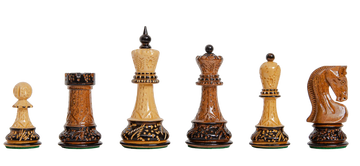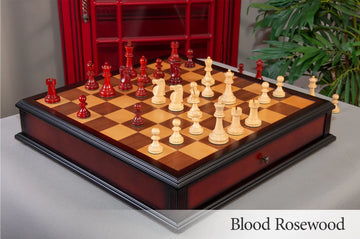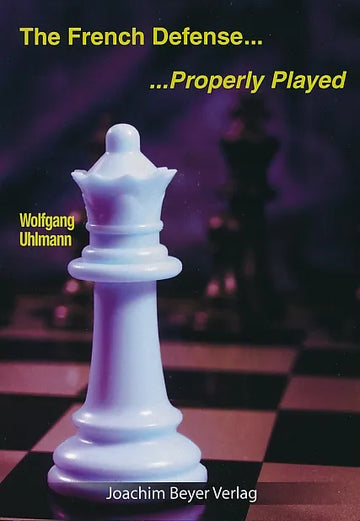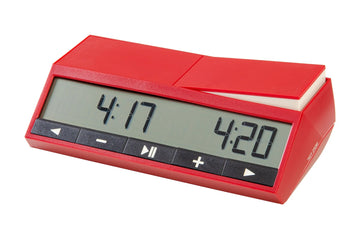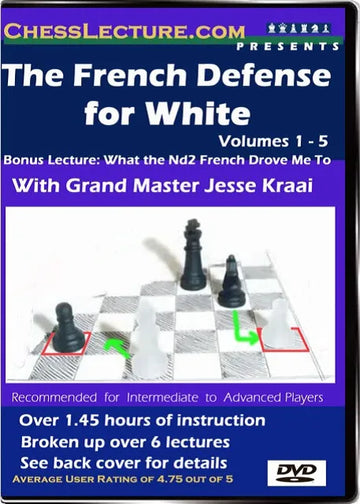French Defense, Classical Variation
In the French Defense Main Line, there’s one variation that scores substantially better for Black than the rest—the Classical Variation. By playing 3...Nf6, Black offers White several ways to continue, none of which hold much promise for your opponent!
What’s more, the Classical Variation scores even better if Black knows the best ways to play each line. Steeped in statistical insights, this guide will help you to crush with the French Defense Classical Variation, whatever your opponent may play.

The French Defense Classical Variation (1.e4 e6 2.d4 d5 3.Nc3 Nf6)
The Classical Variation is but one of myriad lines in the French Defense, an opening rich in complex theory.
The French Defense almost always begins with 1.e4 e6 2.d4 d5. White now has several options. In 48% of today's amateur games, White chooses the Advance Variation (3.e5) —a curious trend since it scores so poorly!
To enter the Classical Variation, however, White must play 3.Nc3—the French Defense Main Line.
As Black, you now have three main choices. 3...Bb4 is known as the Winawer Variation, 3...dxe4 is the Rubinstein Variation, and 3...Nf6 is the Classical Variation. Of the three, the Classical Variation scores the best for Black at club level. As you'll see in the following guide, the Classical offers some genius lines to give your opponent a fright!

French Defense Classical Variation Statistics
On move 4, White has several ways to respond to the Classical Variation. The table below shows that most of them score a majority for Black! Note that these statistics are drawn from nearly one million online games played by players with Elos of 1200-2000, excluding bullet and blitz games.

4.e5—The Steinitz Variation
In 56% of club-level games, White responds to the French Classical Variation with 4.e5—the Steinitz Variation. With this move, White attacks your knight on f6. In reply, you maintain pressure on White’s e-pawn with 4...Nfd7.
Play continues with 5.f4 c5. Here, you put pressure on White’s supporting queen’s pawn. White will now typically bolster both its queen's and king's pawns with 6.Nf3. Now 6...Nc6 and 7.Be3 follow. By move 7 of the Steinitz Variation, the board most commonly looks like this:
- e4 e6 2.d4 d5, 3.Nc3 Nf6 4.e5 Nfd7 5.f4 c5 6.Nf3 Nc6 7.Be3

It’s only now that you have a significant degree of choice. There are several reasonable options. 7...Qb6 is Black’s most popular move, though it could be considered premature and doesn’t score very highly! Although it appears to threaten White’s b2 pawn, the queen risks getting trapped (especially if White plays 8.a3!).
7...a6 and Queenside Expansion in the Steinitz Variation
A much more successful sequence for Black is to prepare for ...Qb6 by first expanding the queenside. By playing 7...a6, 8...b5, 9...Qb6, and 10.cxd4, Black has built up a dangerous attack on the center.
While White has a degree of choice, you can normally play this line regardless. For example: 1. e4 e6 2. d4 d5 3. Nc3 Nf6 4. e5 Nfd7 5. f4 c5 6. Nf3 Nc6 7. Be3 a6 8. Be2 b5 9. a3 Qb6 10. O-O cxd4

Objectively, White is in a stronger position, but your opponent needs to be extremely careful! The only good move here is to resist recapturing the pawn and retreat the bishop back to f2. But not many players see it! Over 90% of players with White will now either recapture on d4 with their bishop or knight, either of which is a losing move!
Notice how White’s dark-squared bishop is lying in wait to strike a pin to White’s king from c5! A very sticky situation for White, from which Black should win the game quite comfortably. An overwhelming advantage is won within the first 12 moves!
4. Bg5—The French Defense Classical Variation Main Line
The Classical Variation Main Line (4.Bg5) is no longer the most popular continuation played at amateur or master level. It’s still seen in 23% of club-level games, though, so it remains crucial to learn. The main line scores well for White, but only because most French Defense players are unaware of the best way to counter it.
When facing 4.Bg5, 59% of players with the Black pieces play the rather passive 4...Be7, but it scores poorly! Much more successful is the tactically sharp McCutcheon Variation (4...Bb4), which immediately takes most opponents beyond their opening repertoire into uncharted territory.
1. e4 e6 2. d4 d5 3. Nc3 Nf6 4. Bg5

4...Bb4—The McCutcheon Variation
After Black enters the McCutcheon Variation, play normally continues with 5. e5 h6. After this, White’s best move is to retreat its bishop back to e2 (6.Bd2). One reason this variation scores so highly at the amateur level is that White doesn’t usually know this! Since the retreat seems counterintuitive, it’s rarely played by those who haven’t studied the opening.
6. exf6—White Enters Dangerous Territory
Instead of retreating the bishop, the vast majority of amateur players choose instead to capture the knight. Thus play continues: 6. exf6 hxg5 7. fxg7 Rg8.
Although Black’s kingside is weakened, the open h-file and open space now present great danger for White if they still decide to castle kingside!
From the moves: 1. e4 e6 2. d4 d5 3. Nc3 Nf6 4. Bg5 Bb4 5. e5 h6 6. exf6 hxg5 7. fxg7 Rg8

Whether your opponent now plays 8.Qh5, 8.Nf3, or almost anything else, you simply follow with 8...Qf6 and 9...Qxg7. This wins back the pawn, offers strong support to the wayward g-pawn, and prepares plenty of firepower to attack the kingside.
Pro Tip!: Since many opponents will follow with Qh5 and Nf3, you can often win material by forcing the queen to retreat to h3 and forking the two pieces with your g-pawn!
6. Bd2—McCutcheon Variation Main Line
White’s best line in the McCutcheon Variation is to retreat the bishop back to d2 to undo Black’s pin. This is the move that grandmasters play and is far stronger than capturing the knight.
In response, you need to first capture White’s knight and then play Ne4 (6...Bxc3 7. bxc3 Ne4). This move provides you with something of an outpost for the knight. It also puts pressure on White’s dark-squared bishop and c3 pawn. The position from here is fairly equal for both sides.
1. e4 e6 2. d4 d5 3. Nc3 Nf6 4. Bg5 Bb4 5. e5 h6 6. Bd2 Bxc3 7. bxc3 Ne4

Since White has several ways to continue, we won't go any deeper into the theory. Few opponents know the 6.Bd2 line anyway. You’ll mostly be having a fantastic time playing against those who don't know the terrain!
The Delayed Exchange Variation 4.exd5
Rewind back to move four. In 7% of games, White will opt to trade pawns on d5 (4.exd5 exd5). This dissolves tension in the center and opens up the e-file. But it isn’t the strongest move.
From here, you can shoot for a tried and tested setup similar to the ordinary French Defense Exchange Variation—post four pieces in a block on the following squares: Bd6, c6, Nbd7, and Qc7:

Notice now how you have three pieces attacking White’s kingside and a solid defensive setup, too. The pressure is on White, and Black goes on to score a strong majority of games from here.
Conclusion
The French Defense Classical Variation is a rock-solid and versatile opening—once you know how to play it the right way! Remember that even strong club-level chess is very different from the Grandmaster game. The advice offered here is based on statistical analysis of thousands of online amateur games, so there's a good chance it will work for you too.
The next time you shift into the infamous McCutcheon Variation or expand the queenside in the Steinitz Variation, you can do so knowing that it has worked wonders for thousands of other players at a similar level. With that, we bid you bonne chance in the French Defense Classical Variation!

